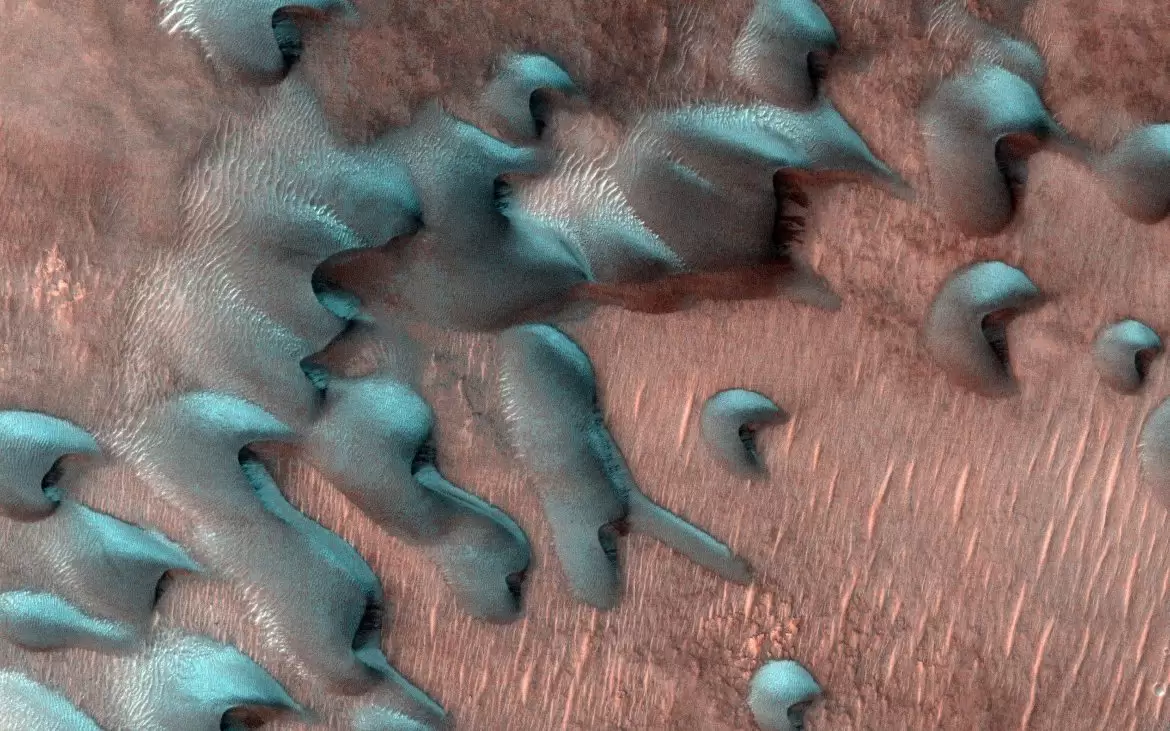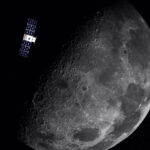Clicking on the “Read Full Article” below will auto-scroll you to the full post (same page).
Source: NASA/JPL-Caltech/University of Arizona
Photo: NASA/JPL-Caltech/University of Arizona

NASA Explores a Winter Wonderland on Mars
When winter comes to Mars, the surface is transformed into a truly otherworldly holiday scene. Snow, ice, and frost accompany the season's sub-zero temperatures. Some of the coldest of these occur at the planet's poles, where it gets as low as minus 190 degrees Fahrenheit (minus 123 degrees Celsius).
Cube-shaped snow, icy landscapes, and frost are all part of the Red Planet's coldest season
Cold as it is, don't expect snow drifts worthy of the Rocky Mountains. No region of Mars gets more than a few feet of snow, most of which falls over extremely flat areas. And the Red Planet's elliptical orbit means it takes many more months for winter to come around: a single Mars year is around two Earth years.
 HiRISE captured these “megadunes,” also called barchans. Carbon dioxide frost and ice have formed over the dunes during the winter; as this starts to sublimate during spring, the darker-colored dune sand is revealed.
HiRISE captured these “megadunes,” also called barchans. Carbon dioxide frost and ice have formed over the dunes during the winter; as this starts to sublimate during spring, the darker-colored dune sand is revealed.
Credits: NASA/JPL-Caltech/University of Arizona
How We Know It Snows
Snow occurs only at the coldest extremes of Mars: at the poles, under cloud cover, and at night. Cameras on orbiting spacecraft can't see through those clouds, and surface missions can't survive in the extreme cold. As a result, no images of falling snow have ever been captured. But scientists know it happens, thanks to a few special science instruments.
NASA's Mars Reconnaissance Orbiter can peer through cloud cover using its Mars Climate Sounder instrument, which detects light in wavelengths imperceptible to the human eye. That ability has allowed scientists to detect carbon dioxide snow falling to the ground. And in 2008, NASA sent the Phoenix lander within 1,000 miles (about 1,600 kilometers) of Mars' north pole, where it used a laser instrument to detect water-ice snow falling to the surface.
Cubic Snowflakes
Because of how water molecules bond together when they freeze, snowflakes on Earth have six sides. The same principle applies to all crystals: The way in which atoms arrange themselves determines a crystal's shape. In the case of carbon dioxide, molecules in dry ice always bond in forms of four when frozen.
“Because carbon dioxide ice has a symmetry of four, we know dry-ice snowflakes would be cube-shaped,” Piqueux said. “Thanks to the Mars Climate Sounder, we can tell these snowflakes would be smaller than the width of a human hair.”
 The HiRISE camera captured this image of the edge of a crater in the middle of winter. The south-facing slope of the crater, which receives less sunlight, has formed patchy, bright frost, seen in blue in this enhanced-color image.
The HiRISE camera captured this image of the edge of a crater in the middle of winter. The south-facing slope of the crater, which receives less sunlight, has formed patchy, bright frost, seen in blue in this enhanced-color image.
Credits: NASA/JPL-Caltech/University of Arizona
Jack Frost Nipping at Your Rover
Water and carbon dioxide can each form frost on Mars, and both types of frost appear far more widely across the planet than snow does. The Viking landers saw water frost when they studied Mars in the 1970s, while NASA's Odyssey orbiter has observed frost forming and sublimating away in the morning Sun.
Winter's Wondrous End
Perhaps the most fabulous discovery comes at the end of winter, when all the ice that built up begins to “thaw” and sublimate into the atmosphere. As it does so, this ice takes on bizarre and beautiful shapes that have reminded scientists of spiders, Dalmatian spots, fried eggs, and Swiss cheese.
This “thawing” also causes geysers to erupt: Translucent ice allows sunlight to heat up gas underneath it, and that gas eventually bursts out, sending fans of dust onto the surface. Scientists have actually begun to study these fans as a way to learn more about which way Martian winds are blowing.













